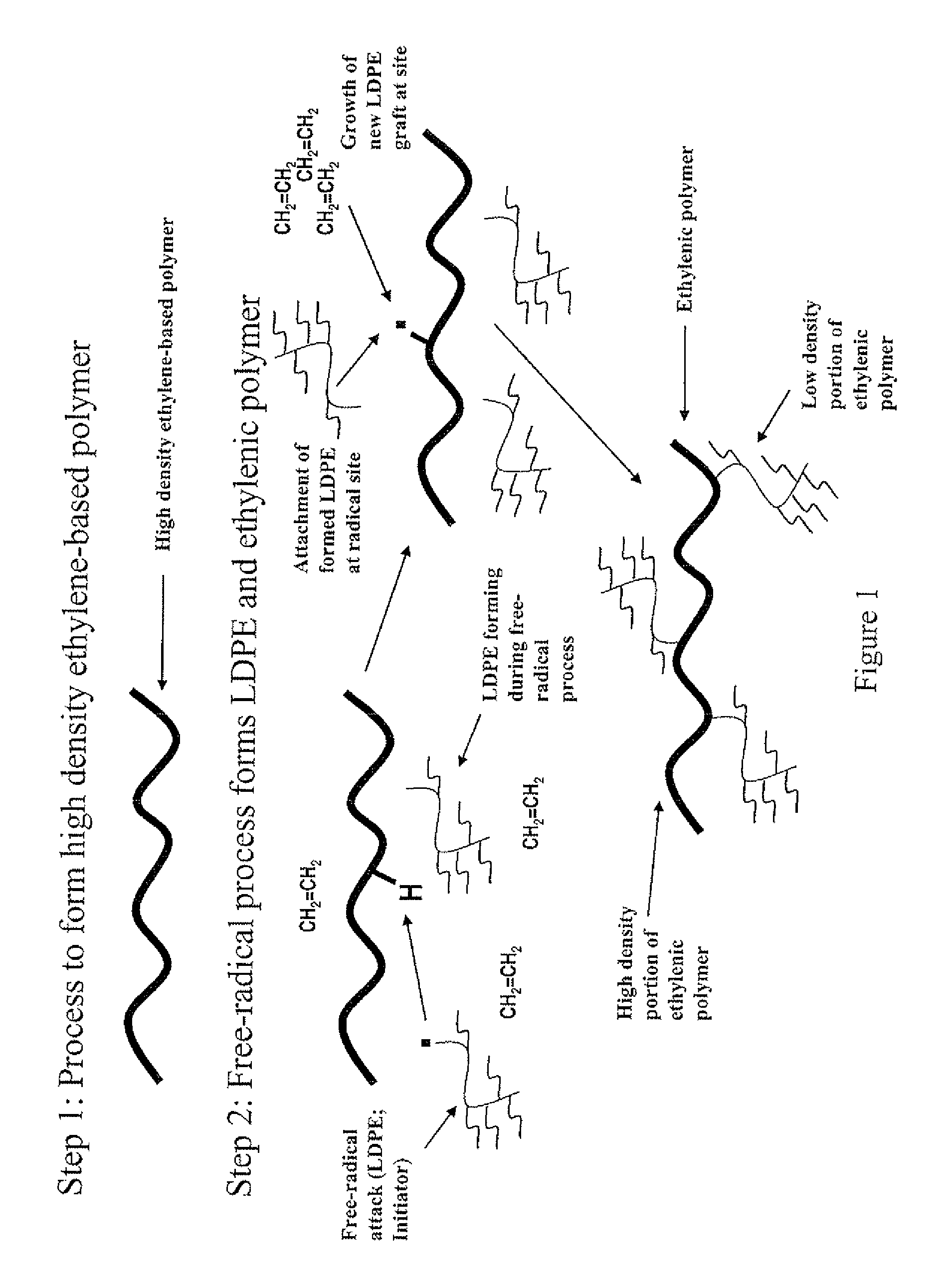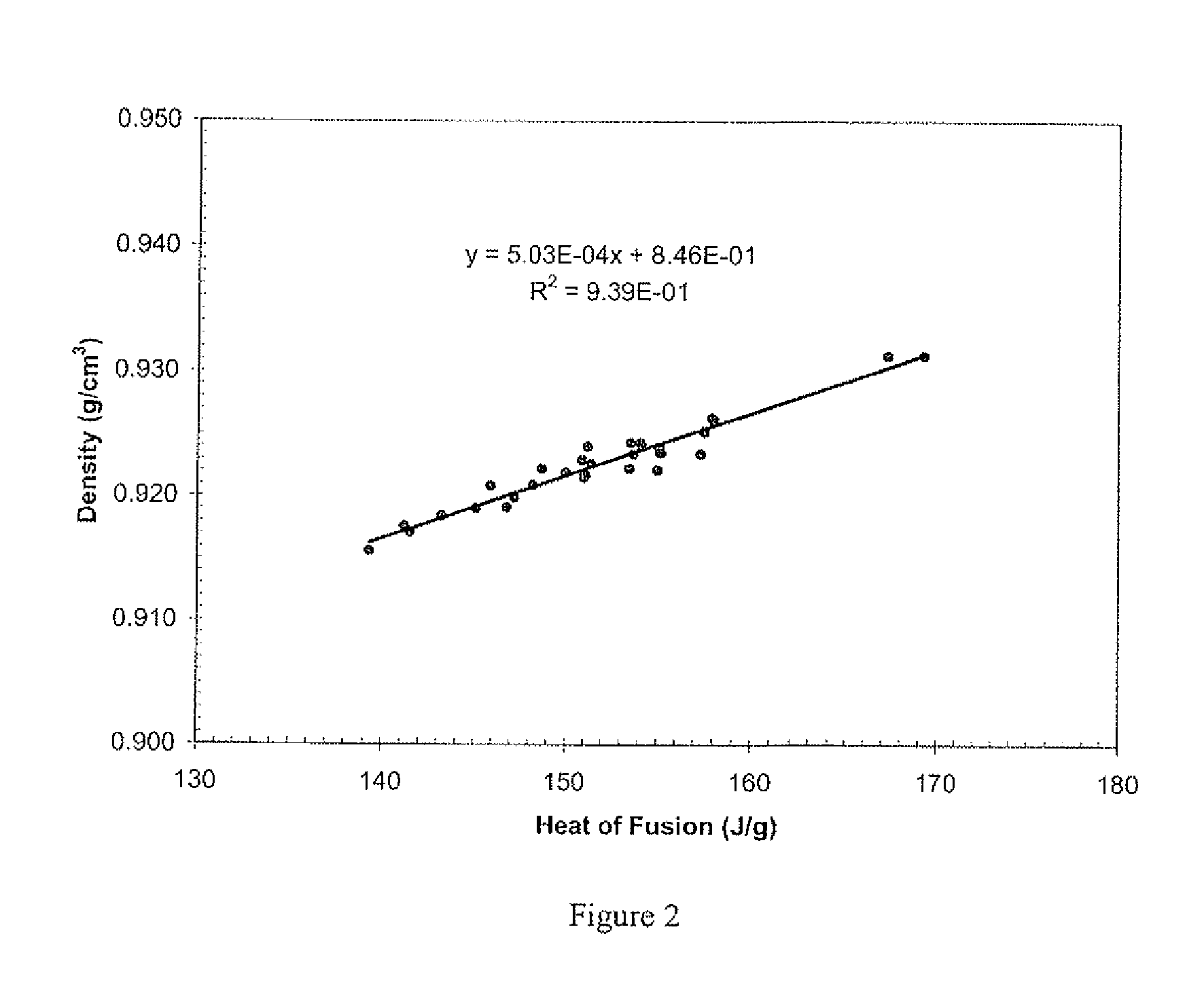Electronic Device Module Comprising Long Chain Branched (LCB), Block or Interconnected Copolymers of Ethylene and Optionally Silane
- Summary
- Abstract
- Description
- Claims
- Application Information
AI Technical Summary
Benefits of technology
Problems solved by technology
Method used
Image
Examples
example 1
[0204]Two grams of Polymer 2 (LP2) are added to a 100 ml autoclave reactor. After closing the reactor, the agitator is turned on at 1000 rpm (revolutions per minute). The reactor is deoxygenated by pulling vacuum on the system and pressurizing with nitrogen. This is repeated three times. The reactor is then pressurized with ethylene up to 2000 bar while at ambient temperatures and then vented off. This is repeated three times. On the final ethylene vent of the reactor, the pressure is dropped only to a pressure of about 100 bar, where the reactor heating cycle is initiated. Upon achieving an internal temperature of −220° C., the reactor is then pressurized with ethylene to about 1600 bar and held at 220° C. for at least 30 minutes. The estimated amount of ethylene in the reactor is approximately 46.96 grams. Ethylene is then used to sweep 3.0 ml of a mixture of 0.5648 mmol / ml propionaldehyde and 0.01116 mmol / ml tert-butyl peroxyacetate initiator in n-heptane into the reactor. An inc...
example 2
[0206]Two grams of Polymer 1 (LP1) are added to a 100 ml autoclave reactor. After closing the reactor, the agitator is turned on at 1000 rpm. The reactor is deoxygenated by pulling vacuum on the system and pressurizing with nitrogen. This is repeated three times. The reactor is then pressurized with ethylene up to 2000 bar while at ambient temperatures and then vented off. This is repeated three times. On the final ethylene vent of the reactor, the pressure is dropped only to a pressure of about 100 bar, where the reactor heating cycle is initiated. Upon achieving an internal temperature of ˜220° C., the reactor is then pressurized with ethylene to about 1600 bar and held at 220° C. for at least 30 minutes. At this point the estimated amount of ethylene in the reactor is approximately 46.96 grams. Ethylene is then used to sweep 3.0 ml of a mixture of 0.5648 mmol / ml propionaldehyde and 0.01116 mmol / ml tert-butyl peroxyacetate initiator in n-heptane into the reactor. The increase in p...
examples 3-5
[0219]This procedure is repeated for each Example. For each example, 2 grams of resin of one of the ethylene-based polymers created in the Preparation of Ethylene-Based Polymers (that is, LP1-3) are added to a 100 ml autoclave reactor. Example 3 is comprised of LP2. Example 4 is comprised of LP1. Example 5 is comprised of LP3. The base properties of these polymers may be seen in Table 3. After closing the reactor, the agitator is turned on at 1000 rpm. The reactor is deoxygenated by pulling vacuum on the system, heating the reactor to 70° C. for one hour, and then flushing the system with nitrogen. After this, the reactor is pressurized with nitrogen and vacuum is pulled on the reactor. This step is repeated three times. The reactor is pressurized with ethylene up to 2000 bar while at ambient temperatures and vented off. This step is repeated three times. On the final ethylene vent, the pressure is dropped only to a pressure of about 100 bar and reactor heating is initiated. When th...
PUM
| Property | Measurement | Unit |
|---|---|---|
| Temperature | aaaaa | aaaaa |
| Percent by mass | aaaaa | aaaaa |
| Solubility (ppm) | aaaaa | aaaaa |
Abstract
Description
Claims
Application Information
 Login to View More
Login to View More - R&D
- Intellectual Property
- Life Sciences
- Materials
- Tech Scout
- Unparalleled Data Quality
- Higher Quality Content
- 60% Fewer Hallucinations
Browse by: Latest US Patents, China's latest patents, Technical Efficacy Thesaurus, Application Domain, Technology Topic, Popular Technical Reports.
© 2025 PatSnap. All rights reserved.Legal|Privacy policy|Modern Slavery Act Transparency Statement|Sitemap|About US| Contact US: help@patsnap.com



